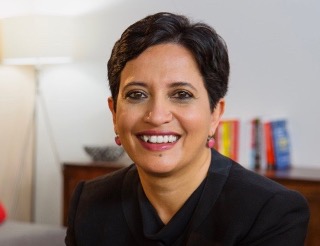Crowdsourcing Repetitive Tasks: CrowdFlower Founder Lukas Biewald (Part 1)
If you haven’t already, please study our Bootstrapping Course and Investor Introductions page.
Lukas Biewald is the founder and executive chairman of CrowdFlower, the world’s largest enterprise crowdsourcing platform. Prior to co-founding CrowdFlower, Lukas was a senior scientist and manager within the ranking and management team at Powerset, Inc., a natural language search technology company later acquired by Microsoft. Lukas has also led the search relevance team for Yahoo Japan. He graduated from Stanford University with a BS in mathematics and an MS in computer science.
Sramana: Lukas, let’s start by talking about your roots. Where do you come from?
Lukas Biewald: I grew up in Boston, and I came out West to study at Stanford in 1999. It was an exciting time to be here. I did my degree in math, and I watched the bubble grow and burst. There was a New York Times articles about the class of 2003 that basically said, “We Don’t Want You,” so I went ahead and stayed at Stanford and got my masters in computer science. In 2004, I turned down an offer to go to Google so that I could accept an offer from Yahoo, which was another mistake.
I did that because I had studied artificial intelligence and I really wanted to work on search algorithms. It is a bit ironic that CrowdFlower is the opposite because it uses human beings to do things that we expect artificial intelligence to be able to do. I was able to work on ranking algorithms at Yahoo for a while. I got into startups when I followed a mentor to Powerset. I was one of the early employees there, so I was the default artificial intelligence expert and I had to develop some AI to make the ranking good.
I was used to having a lot of infrastructure at Yahoo that you just don’t have at startups. I would recommend collecting a million records that say if a search result is good or bad. At Yahoo we had a lot of contractors, like they do at Google, so my boss had to remind me that I had to go and collect those million records. I was a bit of a math nerd, so I had no idea how to hire a whole bunch of people to collect all those records.
Crowdsourcing was not a word then, but we had to collect all those records. I took that task to determine if a search result was good or bad and I put it online. I offered people five cents if they would go through and determine if a result was good or bad. It was incredibly successful. I told my boss that it would take six months to collect the million records that we needed, and we ended up getting a huge portion of it done overnight.
Sramana: That is very interesting. Social media was not as active then.
Lukas Biewald: No, but the task and approach were unique. I think it had a ‘cool’ factor.
Sramana: Did somebody write about it? How did word get out that fast?
Lukas Biewald: I believe people just emailed each other. The truth is you do not need that many people to collect the data, perhaps a thousand people. That would be an appropriate number of people for a blog. However, when it comes to getting actual work done that number is fantastic. It really is a lot, and the outcome shocked me.
Chris Van Pelt, a future co-founder of CrowdFlower, was the guy in charge of designing how the front end of Powerset search engine look. He had been asking people in the company what designs they liked one at a time. I told him that I could get him a thousand opinions about how the designs looked, so I went out and got him all of those opinions. At that point we did not know that we were going to start a company, but we both recognized how powerful crowdsourcing was.
This segment is part 1 in the series : Crowdsourcing Repetitive Tasks: CrowdFlower Founder Lukas Biewald
1 2 3 4 5 6 7
Featured Videos
Can 1M/1M Help Me Raise Money?
How Does 1M/1M Democratize Entrepreneurship Education?
How Does 1M/1M Democratize Management Consulting?
When Is The Right Time To Join 1M/1M?
Can 1M/1M Help Me With Business Development?
Can 1M/1M Help Me With Market Sizing?
Can 1M/1M Help Me Validate My Product?
Will I Have Private 1-on-1 Sessions In 1M/1M?
How Does 1M/1M Help Entrepreneurs Connect With Silicon Valley?
Mentoring or Consulting?
Why Does 1M/1M Charge $1000 a Year?
Why Does 1M/1M Partner With Local Organizations?
Why Don\’t Mentoring Networks Work?
Why Is It Important To Study With 1M/1M Now?
Dan Stewart Story
Vikrant Mathur Story
